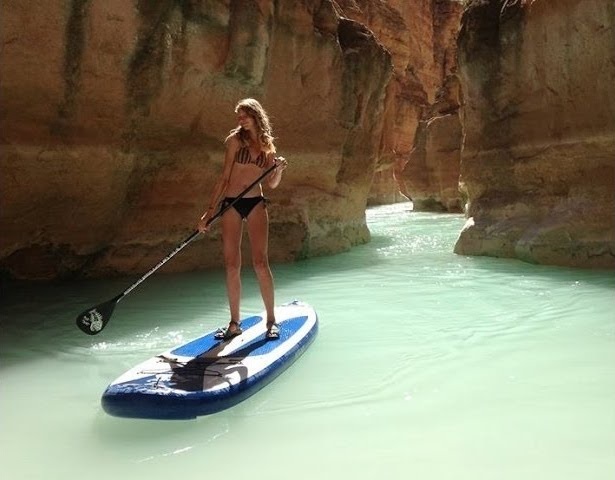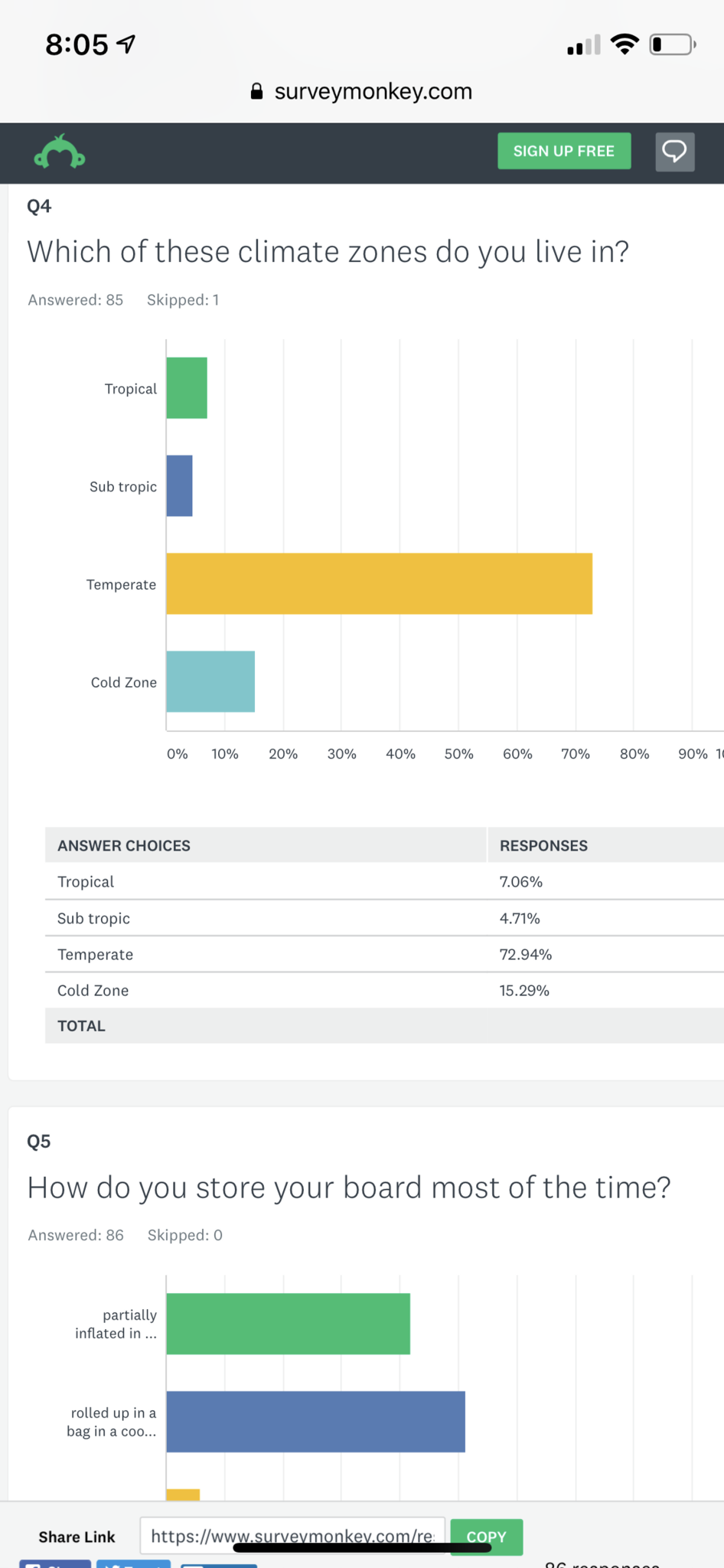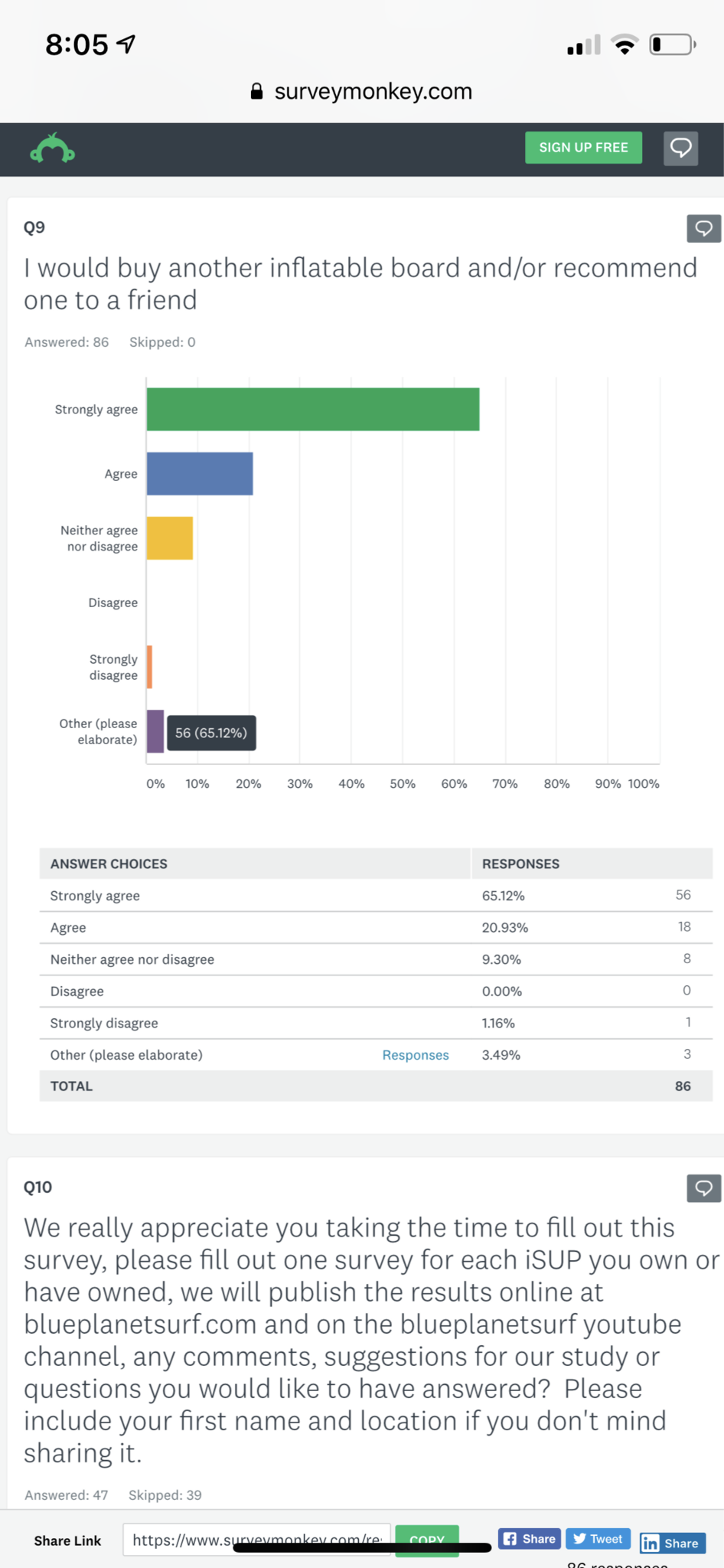Cart
You have no items in your shopping cart

Inflatable SUP compared to hard paddle board: the best SUP for you depends on how you use it. Inflatable Stand Up Paddleboards are great for flatwater paddling and convenience but generally don't perform as well in rough water paddling or sup surfing as a hard board.
This video is an honest comparison of Inflatable Stand Up Paddleboards and hard epoxy boards. Most iSUP videos on YouTube are marketing videos that don't tell the whole story, so we set out to make this video which we hope is informative and will help you choose the best paddle board for your needs.
Covered in the video: the pros and cons of iSUP boards, what they are good for and what they are not as suitable for, which would be the best SUP for your needs, differences in inflatable SUP construction, longevity, survey results, and recommendations. Truth: some are facts, some are opinions, your comments and questions are welcome down below.
Pros of inflatable boards:
1) Portability for transport, storage, travel, etc.
2) Durability, especially for blunt impacts such as smooth rocks, ideal for rivers and rocky shorelines where epoxy boards can get damage easily
3) Safety-soft surface, this is especially helpful for beginners who often try to break their fall by falling onto the board instead of into the water
Cons of iSUP's:
1) Pumping up/ longer setup and breakdown- a hard board is ready to go, a iSUP takes some time to set up and inflate. For this reason (and because it is better for the board) almost half of users surveyed keep their boards inflated even when not in use.
2) Flex- inflatable SUP's are more flexible than hard boards which leads to lower performance and a wobbly, less stable feel and absorbs energy, resulting in lower board speeds. The flex is especially noticeable in rough conditions and in the surf. Flex is less much of an issue in smooth, flat water, so it depends what you plan to use the board for.
3) Limitations of shape- Inflatable have fat, rounded rails and the thickness is the same from nose to tail. Hard boards have finely tuned rails and are tapered (less thick) in the nose and tail area, with the volume generally focused on the standing area where it is needed for stability and less volume in the nose and tail for better performance, especially in waves and chop. A hard board gives the shaper/ designer many more options to optimize performance for specific conditions, rider weight, and skill level.
4) Longevity and seam issues- The PVC material and glue break down over time and more quickly in heat and UV exposure. Leaving an inflatable SUP in the sun can cause the air inside to expand, increasing pressure on the seams that can get softened/ weakened by the heat, causing it to give. Once an inflatable starts to leak at the seams, it is very difficult to repair, this usually means it has to be replaced. In comparison, a well built and properly maintained epoxy hard board can last a very long time.
Leaking seams are very difficult to repair and once this happens it's usually not worth repairing an iSUP
5) Risk of puncture- see below for a link to a paddler whose board is punctured during a paddle adventure in Alaska.
6) Lower performance in some conditions- see video for more details.
7) Environmental impact: Keep in mind that a lot of petrochemical products are wasted if the board gets disposed. It's better to buy a quality board and get lots of use out of it than buying junk that ends up in the landfill.
Our recommendations: Get a well made inflatable board from a reputable manufacturer, or choose a hard board for better performance in surf or rough water.
Inflatable SUP survey results:
https://www.surveymonkey.com/results/SM-XW7FB8NCV/
Some interesting results from our survey:
1) Most inflatable SUP owners live in temperate climates that are more suitable for iSUP's as tropical climates and heat can degrade the PVC and glue in iSUP's more quickly. Inflatable paddleboards seem to last longer in cooler climates.

2) Almost half of the owners keep their iSUP's fully or partially inflated.
3) 65% of inflatable paddle board owners strongly agree that they would buy another iSUP and/ or recommend one to a friend:

Please participate in our survey here:
https://www.surveymonkey.com/r/8ZMZYR3
For more information about our $599 iSUP closeout sale (while supplies last):
https://www.blueplanetsurf.com/blogs/news/inflatable-isup-closeout-sale-599-all-sizes/
Videos mentioned and in B-roll:
Alaskan SUP adventure- board puncture video (at 5:10): https://www.supthemag.com/videos/alaskan-sup-adventure/
Grand Canyon SUP river trip: https://www.youtube.com/watch?v=FvasH6iyl7c
Paddling iSUP's in Venice: https://youtu.be/cTcZ9BAFqTM
Waterfalls of Iceland: https://youtu.be/m4_WT6jX2rQ
Makaha SUPsquatch at Uncle Buffalo's contest: https://www.youtube.com/watch?v=9NVovGtH5b8
Foil iSUP: https://youtu.be/iynQ-cncClQ
One point I forgot to put in the video: Thinner iSUP's are better for surfing as the thinner rails work better for carving on the wave but the downside is more flex. Thin boards flex a lot even if inflated over 20 psi, the thicker the dropstich material is, the less the board flexes. The difference in flex between 4" thick and 6" thick iSUP's is dramatic. So for flat water, get a thick iSUP but for surfing thinner is better if you can deal with the flexing. Just don't expect an iSUP to get anywhere close to the performance of a good surf SUP hardboard. Tripstix, a new German business, is working on an inflatable board with tapered rails, and nose/ tail as well as vacuum chamber granule stringers, it looks promising but I think they will run into several issues with this construction as well: https://www.tripstix.de For now we are focused on hard boards and possibly two part hard boards for airline travel as we feel that the inflatable technology is just not there yet (for performance boards).
I hope this helps you in the quest to find the best SUP for your needs!
Aloha, Robert Stehlik
Hi Kathy,
Yes, you can attach a seat with stick on mounts but if you want to paddle while sitting down, a kayak will work better.
Thanks so much for the run down on pros and cons for SUPS and iSUPS. I know some of the iSUPS come with Kayak seats using the D- Rings- is that possible with a hard SUP? Thanks!
Glad to hear this helped you make an educated decision.
Thank you. This was very helpful lots of info and you did not push a brand or try to sell me a SUP. We will be going with the hard board, again this was very helpful.
Thanks for sharing this video here. An honest comparison was actually necessary to deal with inflatable sup and hard board and only after that one should choose the correct one for them. It actually depends on the purpose for which you are buying one. Well, inflatable sup are easy to carry.
The Tripstix technology looks promising but it's still ugly (designed by engineers.) They need good a Industrial Designer to make that board design marketable.
The multi-shape iSUP rockers exist but only for river SUPing. I tried a Hala surf-SUP @ Ala Moana and indeed it did turn on a dime but I couldn't keep it straight in chop or currents for long runs in the channel lane.
The project looks promising. It's difficult to make the joints stiff and strong enough, so let's see how it performs, looks like they raised almost $400k on Kickstarter and Indiegogo, so hopefully, they deliver as promised.
What do you think of the EasyEddy Paddleboards on Kickstarter?
https://www.kickstarter.com/projects/artechllc/easy-eddy-three-piece-modular-paddle-board?ref=601obm